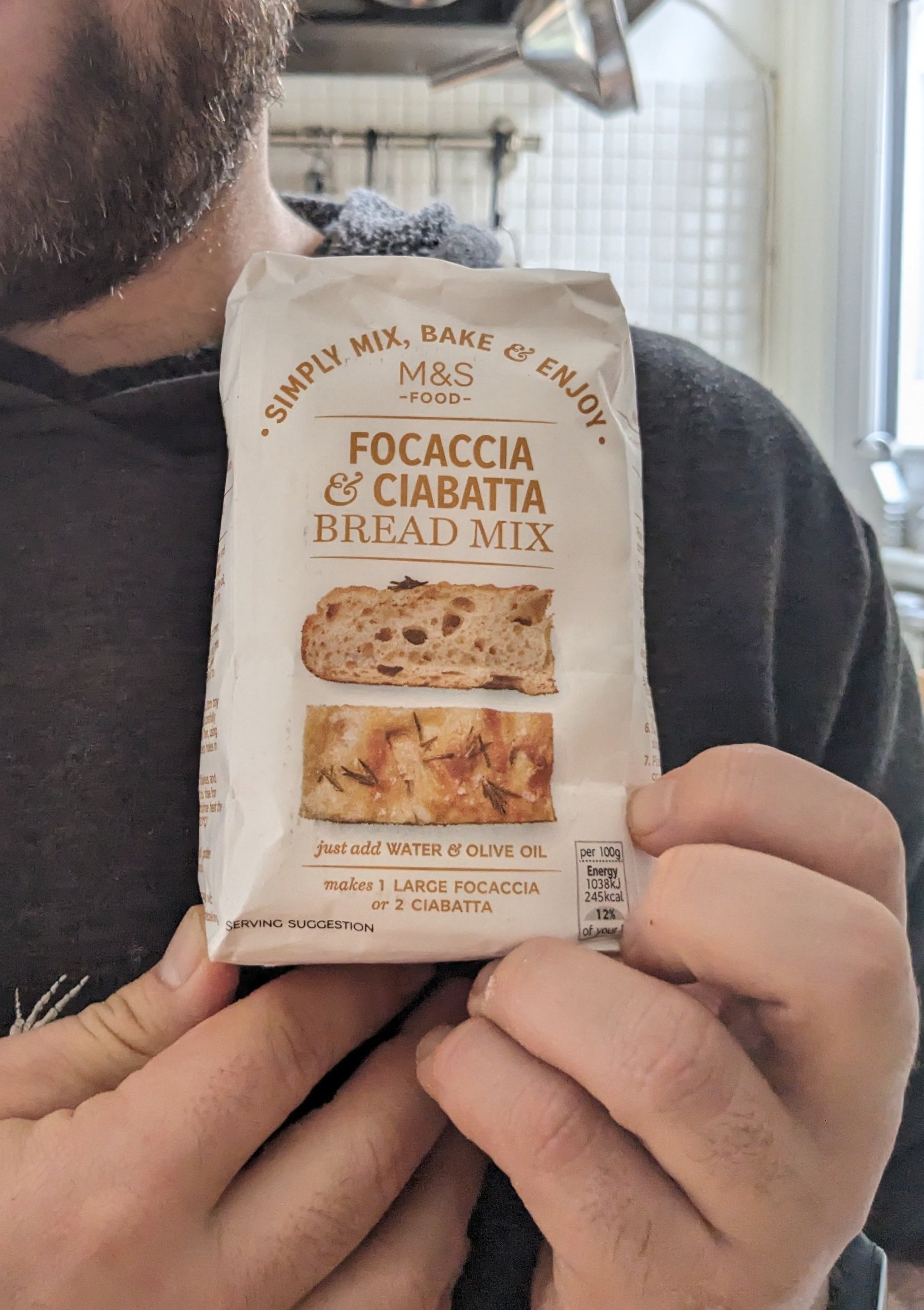Just add water: the easiest way to make homemade bread at home
What’s in your bread?
Today we went to the supermarket and picked up some pre-made and packaged bread.
We were curious to see what we were going to eat.
We turned the label (here for the source) and this is what we were going to put inside our bodies today:
Wheat Flour [with Calcium, Iron, Niacin (B3) and Thiamin (B1)], Water, Yeast, Salt, Vegetable Oils (Rapeseed and Sustainable Palm), Soya Flour, Calcium Propionate; E472e (Mono- And Diacetyltartaric Acid Esters Of Mono- And Diglycerides Of Fatty Acids), E481 (Sodium stearoyl lactylate); Ascorbic Acid (Vitamin C ).
Mmm, delicious, right?
And we thought that bread was just water, yeast and flour...silly us!
It is often said that we shouldn't eat things we are not able to understand, and even a simple thing like bread shouldn't escape this scrutiny: packaged, sliced bread contains emulsifiers, preservatives and processed oils.
Even bread, the staple of humanity, one of the most ancient recipe ever, has been derailed from its cosy simplicity.
Now let's think about it: how is it possible that we have been making bread for so many centuries, even in small households, but have now lost such a simple and familiar practice?
People may say that making bread takes time and can be complicated, and, I have to admit, I understand.
Waiting for the dough to rise does take time, and even more, balancing the yeast and flour, so that the yeast is happy enough to make the dough rise, is not easy and I have failed many times.
But do we really want to eat all those processed ingredient and chemicals?
Here at Southstainable, we try to find the equilibrium between the ancient natural practices and modern busy life, between economical and wholesome, between easy and elaborated.
And then we found the perfect solution!
The easiest way to make bread at home
Recently, we discovered a product that I feel is really worth promoting. Bear in mind, we don't receive any money for this (as you can see, there are no ads on this website), we just want to promote what we think will make life easier and more sustainable for everybody.
Available in supermarkets are bread mixes for making many types of bread, from white bread to ciabatta, from multigrains to wholemeals.
We bought and tried a few varieties and they really work well whilst being very simple.
They can also be found in most supermarkets (we tried M&S, Tesco and Waitrose), costing from £1 to £1.60 (often less than pre-made bread!) and thus can be well integrated in our busy London lives.
And the best thing?
They contain only simple ingredients and no preservatives (because everything is raw)
For example, the M&S Ciabatta mix contains: Wheat Flour (with Calcium Carbonate, Iron, Niacin, Thiamin), Yeast, Sourdough Culture, Salt and Malted Barley Flour.
How to use a bread mix
The simplicity of those mixes makes switching from ultra-processed bread to natural homemade bread very easy.
You simply need to pour the mix in a bowl, add water, mix and put to rest to rise. Then massage a bit, and put to rest again. Repeat and cook (instructions included in the packaged).
No brain needed, cosy experiences assured!
We have yet to fail once.
Always raised, always tasted good.
We have tried with kids too and they loved it.
A few of my personal tips to maximise results
Before starting to mix, pre-heat the oven to about 80 degrees for around 5 minutes, then turn it off. After you mix it, put the bowl covered with a cloth in the now-warm oven. The dough will rise much better (yeast are living things and they like a cosy warm environment, which speeds up their fermentation process)
When kneading the dough, use the back end of your hand/wrist and move forward. This movement will make the bread texture more bubbly instead of kneading with your finger and compressing the dough.
When placing the dough in a tray for cooking, mould it into your desired shape and leave to rest for around 10 minutes. By doing so, the dough will have a little time to rise again before cooking.
You can leave the bread to rise overnight if it is cold. The fermentation will be much slower but will have more time. This is the perfect solution if you don't have much time but want to be able to cook the bread in the morning and have the suave smell of fresh bread whilst having breakfast.
Making bread is a discipline from ancient time that is getting lost in our household, yet is simple and very nurturing both for the body and the soul.
I know it can be difficult to find the time to do something that requires such a long period of time, but, really, you can work/play/do other things whilst the bread dough rises.
And trust us, after you try those pre-made mixes, you will never buy processed bread again.






